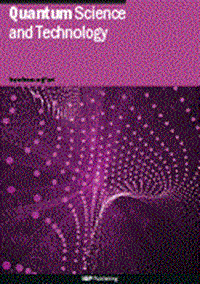弱测量的动力结构因子
IF 5.6
2区 物理与天体物理
Q1 PHYSICS, MULTIDISCIPLINARY
引用次数: 0
摘要
我们对量子系统的大部分知识都被封装在厄米算子的期望值中,这是通过平均射影测量得到的实验结果。然而,动力学性质通常由在不同时间求值的算子的乘积来描述;这种可观测物不能通过单独的射影测量来测量,因为射影测量是一次发生的。例如,动态结构因子(DSF)描述了密度激励(如声子)的传播,并从不同时间的空间密度算符推导而来。在平衡系统中,这可以通过首先以特定的波矢量和频率激励系统,然后测量响应来获得。在这里,我们描述了一种替代方法,使用一对时间分离的弱测量,并分析表明,它们的相互关联函数直接恢复DSF,对于所有系统,甚至远离平衡。这种一般模式可用于求任意一对弱可观测量的互相关函数。我们用一维玻色-哈伯德模型的矩阵积态模拟,通过相衬成像微弱测量,对该技术进行了数值验证。我们探讨了该方法的局限性,并证明了其在有限成像分辨率下的实际实验中的适用性。本文章由计算机程序翻译,如有差异,请以英文原文为准。
Dynamical structure factor from weak measurements
Much of our knowledge of quantum systems is encapsulated in the expectation value of Hermitian operators, experimentally obtained by averaging projective measurements. However, dynamical properties are often described by products of operators evaluated at different times; such observables cannot be measured by individual projective measurements, which occur at a single time. For example, the dynamical structure factor (DSF) describes the propagation of density excitations, such as phonons, and is derived from the spatial density operator evaluated at different times. In equilibrium systems this can be obtained by first exciting the system at a specific wavevector and frequency, then measuring the response. Here, we describe an alternative approach using a pair of time-separated weak measurements, and analytically show that their cross-correlation function directly recovers the DSF, for all systems, even far from equilibrium. This general schema can be applied to obtain the cross-correlation function of any pair of weakly observable quantities. We provide numerical confirmation of this technique with a matrix product states simulation of the one-dimensional Bose–Hubbard model, weakly measured by phase contrast imaging. We explore the limits of the method and demonstrate its applicability to real experiments with limited imaging resolution.
求助全文
通过发布文献求助,成功后即可免费获取论文全文。
去求助
来源期刊

Quantum Science and Technology
Materials Science-Materials Science (miscellaneous)
CiteScore
11.20
自引率
3.00%
发文量
133
期刊介绍:
Driven by advances in technology and experimental capability, the last decade has seen the emergence of quantum technology: a new praxis for controlling the quantum world. It is now possible to engineer complex, multi-component systems that merge the once distinct fields of quantum optics and condensed matter physics.
Quantum Science and Technology is a new multidisciplinary, electronic-only journal, devoted to publishing research of the highest quality and impact covering theoretical and experimental advances in the fundamental science and application of all quantum-enabled technologies.
 求助内容:
求助内容: 应助结果提醒方式:
应助结果提醒方式:


